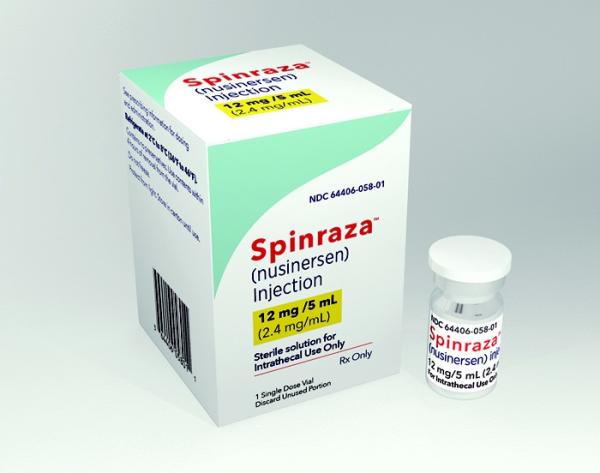Spinraza Disease Interactions
There are 2 disease interactions with Spinraza (nusinersen).
Nusinersen (applies to Spinraza) bleeding risks
Moderate Potential Hazard, Moderate plausibility. Applicable conditions: Coagulation Defect
Coagulation abnormalities and thrombocytopenia, including acute severe thrombocytopenia, have been reported after administration of some antisense oligonucleotides. In one clinical study, platelet levels below the lower limit of normal were observed in 6 of 56 (11%) nusinersen-treated patients compared to 0 of 28 sham-procedure control patients who had normal or above normal platelet levels at baseline. No patient had a platelet count less than 50,000 cells/microliter, however, and no patient developed a sustained low platelet count despite continued drug exposure. Given the potential for increased risk of bleeding complications, therapy with nusinersen should be administered cautiously in patients with active bleeding or coagulation abnormalities. Platelet counts and coagulation laboratory testing should be performed at baseline and prior to each administration of nusinersen and as clinically needed.
References
- (2017) "Product Information. Spinraza (nusinersen)." Biogen Idec Inc
Nusinersen (applies to Spinraza) renal toxicity
Moderate Potential Hazard, Moderate plausibility. Applicable conditions: Renal Dysfunction
Renal toxicity, including potentially fatal glomerulonephritis, has been observed after administration of some antisense oligonucleotides. Caution is advised if used in patients with renal impairment. The manufacturers recommend to conduct quantitative spot urine protein- testing (preferable using a first morning urine specimen) at baseline and prior to each dose of nusinersen. A urine protein concentration greater than 0.2 g/L merits retesting and further evaluation.
References
- (2017) "Product Information. Spinraza (nusinersen)." Biogen Idec Inc
Spinraza drug interactions
There are 3 drug interactions with Spinraza (nusinersen).
More about Spinraza (nusinersen)
- Spinraza consumer information
- Check interactions
- Compare alternatives
- Pricing & coupons
- Drug images
- Side effects
- Dosage information
- During pregnancy
- FDA approval history
- Drug class: miscellaneous uncategorized agents
- En español
Related treatment guides
Drug Interaction Classification
| Highly clinically significant. Avoid combinations; the risk of the interaction outweighs the benefit. | |
| Moderately clinically significant. Usually avoid combinations; use it only under special circumstances. | |
| Minimally clinically significant. Minimize risk; assess risk and consider an alternative drug, take steps to circumvent the interaction risk and/or institute a monitoring plan. | |
| No interaction information available. |
Further information
Always consult your healthcare provider to ensure the information displayed on this page applies to your personal circumstances.


